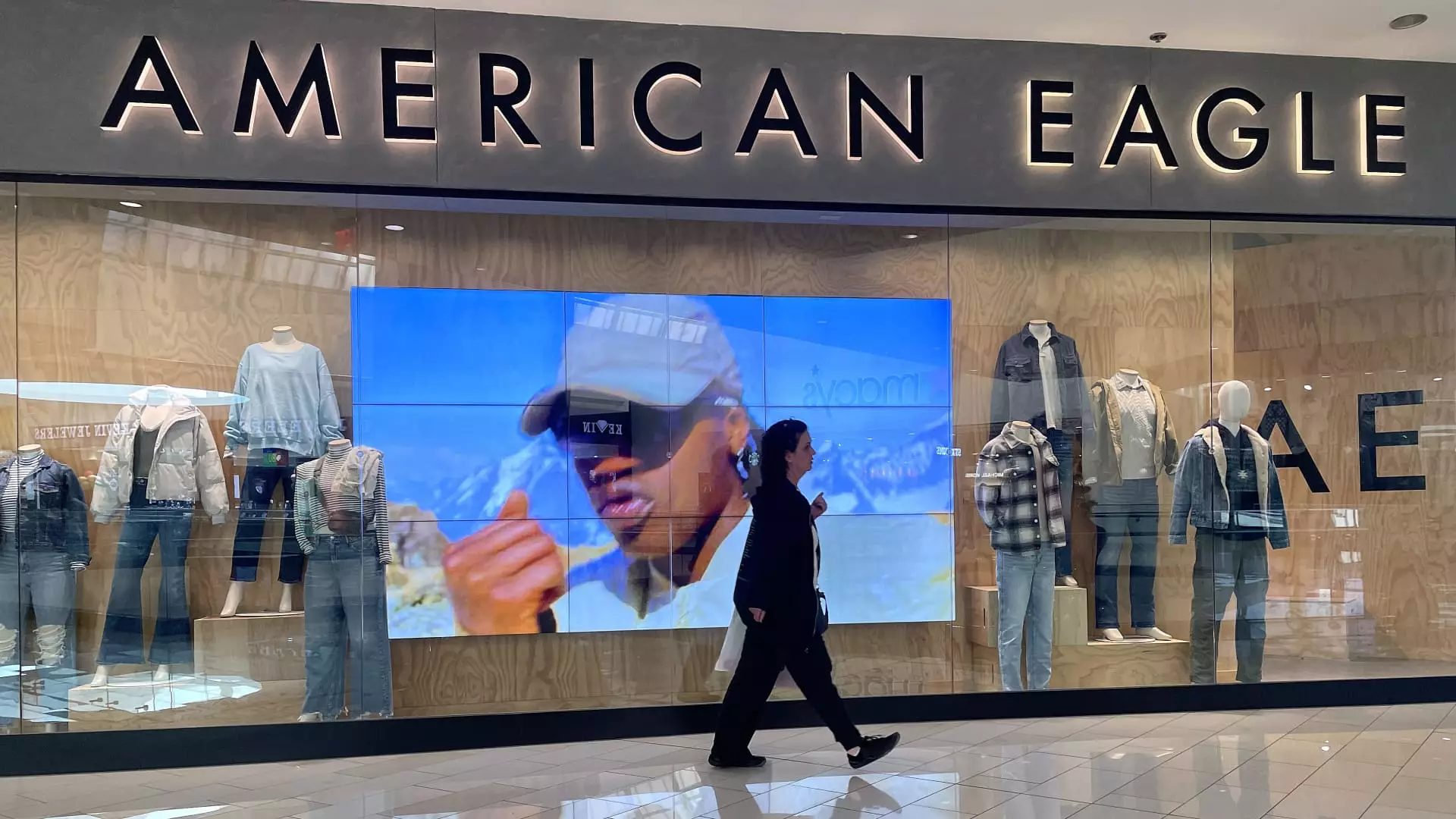American Eagle Outfitters faced significant market backlash following its third-quarter earnings report, which resulted in a dramatic 13% drop in shares during extended trading. This decline signals underlying issues within the company’s performance and suggests a broader challenge faced by retailers today. The stock market’s response reflects not just the financial metrics presented but also investor sentiment amid an evolving consumer landscape that prioritizes value.
The company’s third-quarter performance revealed a mixed bag of results. Although American Eagle managed to exceed earnings per share expectations—reporting an adjusted 48 cents as opposed to the anticipated 46 cents—it narrowly missed revenue forecasts, generating $1.29 billion against the expected $1.30 billion. This shortfall marks the third consecutive quarter that the company has not met Wall Street’s sales projections, a trend that raises concerns about its competitive positioning and operational strategies.
The reported net income for the three-month period ending November 2, amounted to $80 million, translating to 41 cents per share, a decrease from the previous year when net income stood at $96.7 million, or 49 cents per share. Such declines reinforce the need for a more strategic approach to regain momentum in the marketplace.
American Eagle’s struggles highlight an increasingly prevalent phenomenon in the retail space: value-seeking consumers wavering in their spending habits. CEO Jay Schottenstein cited strong back-to-school season sales; however, the inconsistency between key retail moments and overall demand presents a troubling picture. Retail as a whole is evolving, as consumers appear more selective, splurging only during peak shopping events.
This pattern mirrors findings from other retail giants, such as Foot Locker and Dollar Tree, which similarly reported fluctuations in consumer spending. The implications are clear: retailers must adapt swiftly to changing consumer expectations if they wish to thrive in a competitive landscape.
Looking ahead, American Eagle’s holiday quarter projections fall short of market expectations. The company anticipates comparable sales growth of only 1% and overall sales down by approximately 4%. This anticipated decline is impacted by a loss of $85 million due to a selling week reduction and a delayed holiday shopping season start. Such forecasts starkly contrast with analyst expectations, which projected a growth rate of 2.2%.
Additionally, the revised guidance for annual sales growth—now projected at merely 1%—represents a retreat from the previous forecast of 2% to 3%. This cautious outlook may stem from uncertainties surrounding macroeconomic conditions and upcoming electoral events, which could further hinder consumer spending.
Despite the underwhelming projected performance for the holiday season, American Eagle has been buoyed by strong sales within its Aerie brand. With third-quarter revenue for Aerie reaching an all-time high, this segment showcases resilience; comparable sales increased by 5%, building on a 12% surge a year prior. This distinction underscores the importance of differentiated offerings and strategic brand positioning amid broader market challenges.
As competitors like Abercrombie & Fitch and Dick’s Sporting Goods begin to pivot towards a more optimistic outlook, American Eagle’s continued caution may require reevaluation. It must implement innovative strategies to appeal to today’s discerning consumers while aligning operational decisions with growth objectives.
American Eagle’s fiscal third quarter presents critical insights into the complexities of the current retail environment. The decline in stock prices, combined with sales misses and a cautious outlook, demands a proactive response. To regain investor confidence and market share, American Eagle must not only enhance its fundamental business practices but also adapt swiftly to the shifting consumer dynamics that define today’s retail landscape. The focus should be on refining brand messaging, optimizing inventory management, and fostering unique shopping experiences that resonate with demanding customers. Balancing short-term challenges with long-term growth strategies will be vital for American Eagle’s resurgence in the competitive apparel market.


Leave a Reply